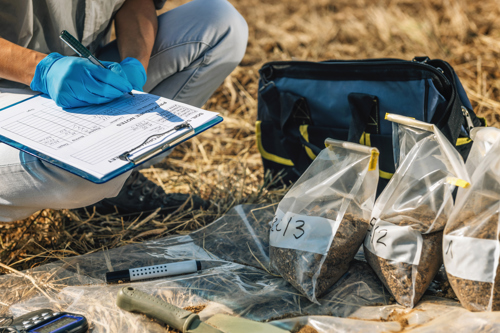When it comes to rural builds, getting the right wastewater system in place early can save a whole lot of headaches later.
I recently did a site visit with a couple planning their forever home on a sloping lifestyle block just outside Whangārei. The section was beautiful — native bush on the fringes, a new shed already in, and the house site pegged out at the top of the property.
They had two possible locations in mind for the septic tank, so we walked the site together to weigh up the options. It was a great reminder that choosing where your system goes isn’t just a tick-box item — it’s one of the most important early decisions you’ll make. The right placement can affect everything from how much excavation you’ll need, to how usable the rest of your land will be in future.
So if you’re in the early stages of planning a rural build, here’s what to think about when it comes to septic tank placement — and why getting it right from the start can make all the difference.
First things first: the lay of the land

One of the biggest factors I’m looking at straight away is slope — both the shape and the angle. This block had a nice consistent slope of around 7 degrees across most of the area, dropping away a bit more sharply (around 10 degrees) as we got closer to the boundary. That’s workable — gentle enough to support soakage and good gravity feed, but steep enough to help with natural drainage.
Site constraints — what can’t you build on?
We identified a couple of key constraints early on. There’s a natural overland flow path running through the lower section of the site — basically where water moves across the land in heavy rain. You never want to site a septic tank or disposal field here. Likewise, we mapped out a stream running along the lower edge of the block. That stream gives us a setback zone, which limits where we can safely discharge wastewater.
Water tanks and runoff
The shed already had a large water tank installed — great to see. But it’s important to plan where the overflow from that tank is going. Stormwater overflow must be at least 20 metres away from the wastewater disposal area, so you don’t overload the soil or create cross-contamination risks. That ruled out the lower of the two proposed tank locations, which sat too close to the shed’s water runoff area.
Gravity always wins
I’m a big fan of gravity-fed systems where we can make them work — they’re lower maintenance and more energy-efficient over time. The top of the site is where the house and main building platform will go, so placing the septic tank well below the house gives us a nice drop for gravity flow.
The second tank option was uphill from the house site — which would’ve meant needing pumps or a STEP system, adding cost and complexity. So, we ruled that out.
Soil testing: always non-negotiable

The last piece of the puzzle is the soil sample. We always carry out a full analysis to understand how the soil handles water — how fast it soaks in, what category it falls under, and what loading rates we’re working with. This tells us how big the disposal field needs to be, and whether we can use a standard trench system, beds, or something more specialised like a dripline system.
In this case, the soil was ideal — free draining, loamy, and not compacted — which gave us more flexibility in system design.
Decision made
So which spot won? Below the house, on a 7-degree slope, clear of natural water flows, with good soil and excellent gravity fall — was the clear winner.
Every rural site is different, but the key is always the same: make wastewater part of your early planning, and involve someone who can look at the full picture — land, buildings, water, and long-term use.
If you're starting a rural build, or thinking about upgrading your existing septic system, we're always happy to come out, walk the land with you, and help you get it right from the ground up.







